Available device versions:
NXW101.3 – NEXO X3 SYSTEM MAIN BOARD: LOGIC MODULE X3 + ALARM MODULE
NXW101.4 – NEXO X4 SYSTEM MAIN BOARD: LOGIC MODULE X4 + ALARM MODULE

The Nexo system main board is the heart of building automation. The central unit makes all decisions within the system and is responsible for the alarm system, lighting, blinds, heating, air conditioning, multiroom audio, and video intercom. It controls the flow of information from programmable switches and mobile applications. With internet and GSM access, it can notify users about current events via SMS or the NexoVision app.
IMPORTANT – Software Update for Nexo X1 and X2
Due to the new generation of software designed for X3 and X4 main boards, updates to earlier units – X1 and X2 generations – require prior contact with our technical support department to determine the update procedure.
KEY PRODUCT FEATURES:
LOGIC MODULE
- Touch panel interface (up to 8 panels)
- Expansion card interface (up to 32 cards)
- USB port (PC-Link)
- Compatible with Remote Panel software
- Compatible with NexoUpdater software
- Energy management system, support for backup power battery
- Status indicator LEDs and service buttons
- Enclosure designed for DIN rail mounting (TH-35)
- Integrated alarm system (16 partitions)
- Automation logic (500 logic blocks)
- System event history
MODUŁ ALARMOWY
- 20 system inputs supporting modes:
- NO/NC
- EOL NC
- 2EOL NC 10k/1k1
- Analog 0–100
- Pulse count (1 second/10 seconds)
- Pulse frequency
- Contact
- High-current output parameterization option
- Overcurrent protection for input power supply
- Two high-current outputs for acoustic/optical siren control
20 INPUTS WITH EXPANSION CAPABILITY – FOR VARIOUS TYPES OF SENSORS
The system allows virtually any type of sensor to be connected and used simultaneously for the alarm system as well as for automation conditions.
Common sensor types include: PIR motion sensors, rain sensors, humidity sensors, soil moisture sensors, liquid level sensors, flood, fire, gas, wind force sensors, and more.

Central unit sensors
The central unit supports connection of almost any type of sensor, which can be used both for the alarm system and building automation purposes. Thanks to this integration, many functions become possible that aren’t available in typical automation systems.
For instance, window-opening sensors can simultaneously trigger alarm responses and control heating or ventilation. When a window is opened, ventilation is automatically switched off, as there’s no need for heat recovery during airing. In winter, opening a window will also disable heating in that room.
Motion or presence sensors are another example — used both for intrusion detection and smart lighting. If a room is unoccupied, the lights are automatically turned off.
.


Safe Home
Integrated alarm system
The alarm system is fully integrated with the central unit, offering a modern protection system for your home. It allows the building to be divided into multiple zones, which can form independent alarm partitions (e.g., night mode, garden, or whole house).
Common areas like hallways or staircases can be shared across multiple partitions and automatically armed.
The system supports up to 32 zones and 16 partitions, integrates with programmable switches and mobile apps, and includes an event log and priority-based alarm schemes for standard, 24-hour, or silent partitions.
The system meets Class C security certification issued by TECHOM (Technical Security Development Institute).
.
System alarms
The control unit also offers extensive support for system alarms, which define the system’s behavior in response to events other than burglary. Examples include three incorrect password attempts, power supply failure, unauthorized opening of the electrical cabinet, or disarming the alarm under duress (so-called silent alarm). When such events occur, the system can execute any predefined programmed actions.

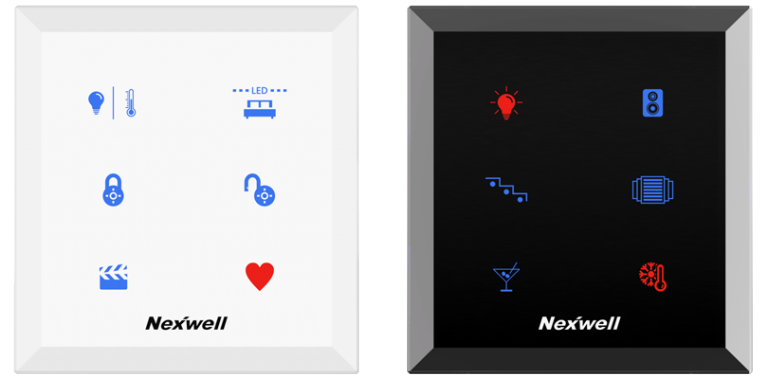
Alarm behavior
The integration of the alarm system with the building automation system provides a wide range of tools—both for notifying users and taking predefined actions in the event of an alarm. In the case of a burglary alarm, the most important responses include notifying the security services and activating visual and acoustic sirens. Other important actions include sending an SMS notification to the user, triggering pulsing lighting throughout the building and property, or flashing RGB lights in red.
Different types of alarm partitions require different action scenarios, which are triggered upon activation. For example, a 24-hour partition for flood detection does not require third-party intervention, only notifying household members and shutting off the water valve. A fire alarm, however, is more restrictive: in addition to the standard alarm procedures, it also raises the roller shutters to allow faster evacuation.
Touch panels
Up to 8 touch panels or zone keypads can be connected directly to the Nexo system central unit. These can be physical devices or remote panels installed as applications on PC computers. The touch panels are treated by the central unit as user terminals. For this reason, all automation data is stored in the memory of the central unit. Thanks to this architecture, a panel can be disconnected from the system, replaced with a new one, and once it is powered on, it will have exactly the same functions as its predecessor.

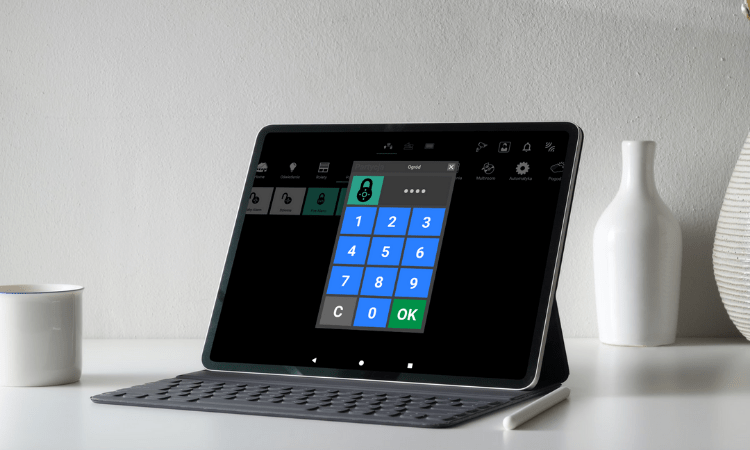
Security features
The central unit is equipped with numerous anti-tamper protections. One such protection is the tamper input that monitors the enclosure door. If the alarm system is armed, any opening of the control cabinet will trigger an alarm and notify building security. Another security feature is the power monitoring system for peripheral devices. If an intruder pulls the LCD panel off the wall and causes a short circuit on the communication cable, the central unit will detect this and cut power to the interface—thus preventing the backup battery from being drained.
Reliability
If the central unit fails, individual modules (lighting, blinds, relays) continue to work autonomously in basic mode.
This ensures users can still operate lights, heating, or blinds using traditional switches.
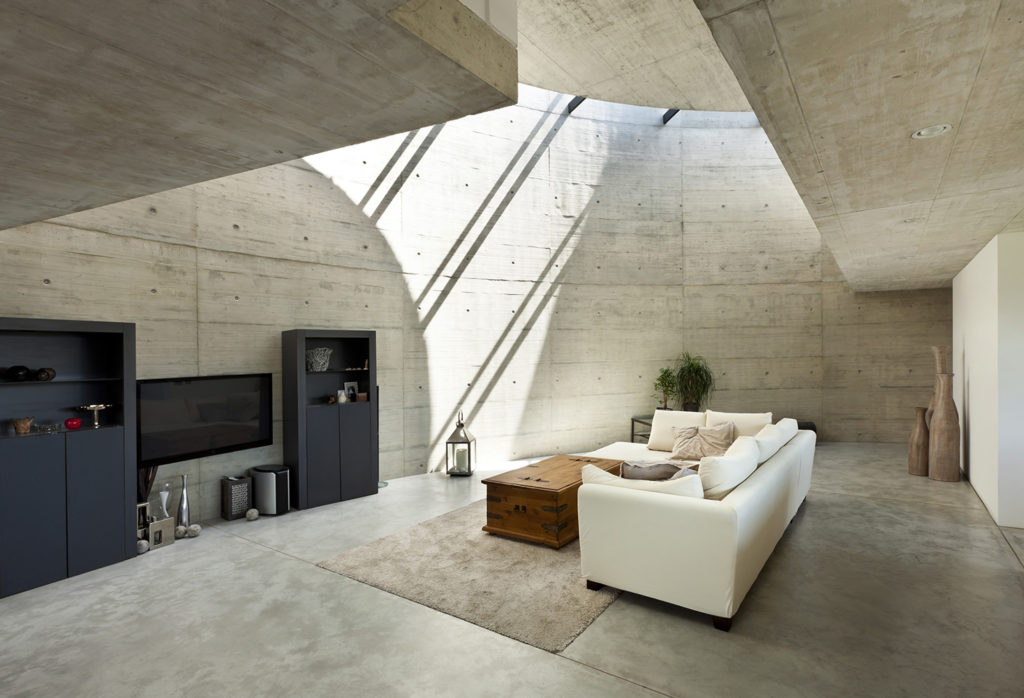

Technical buttons
The central unit includes three technical buttons to assist in installation.
They allow the installer to disable interfaces (e.g., touch panels, expansion cards) during operation for safe live configuration.
Status LEDs help indicate which interfaces are active or inactive.
Easy installation
The enclosure is DIN rail (TH-35) mountable, and all cables are connected using plug-in terminals, which simplifies wiring and improves overall reliability.
Expansion Cards
Expansion cards are simply a way to tailor the central unit to your specific needs. In other words, it needs to be equipped with the appropriate “assistants” to perform the functions desired by the user.
A central unit equipped with a video intercom card will be able to handle video intercom functionality. Adding this capability comes with numerous benefits. For instance, when the alarm system is armed, the unit will detect that no one is home and automatically forward any visitors ringing the gate intercom to the owner’s phone. If a neighbor rings the doorbell while you’re on vacation, the system will turn on the porch and garden lights and forward the call, making it appear as though someone is home. When the system detects your phone via the intercom panel, it will automatically open the gate, the garage, and raise the blinds.
Now imagine what happens when you teach the central unit to use the internet. It will be able to send and receive all information about your devices, lighting, and temperature directly to your phone or tablet, no matter where you are in the world. What’s more, you’ll have full control over everything happening on your property. You can even give it commands, such as: “I’ll be home earlier today”, and the system will know to turn on the heating, raise the blinds, switch on the lights, and start your music.
THE POWER OF NEXO LIES IN AUTOMATION
This is the solution your home deserves!
Nexo is an advanced building automation system that allows you to program virtually any operating scenario. The tools it offers and the interactions between them greatly multiply its nominal capabilities, making it one of the most powerful BMS systems on the market.
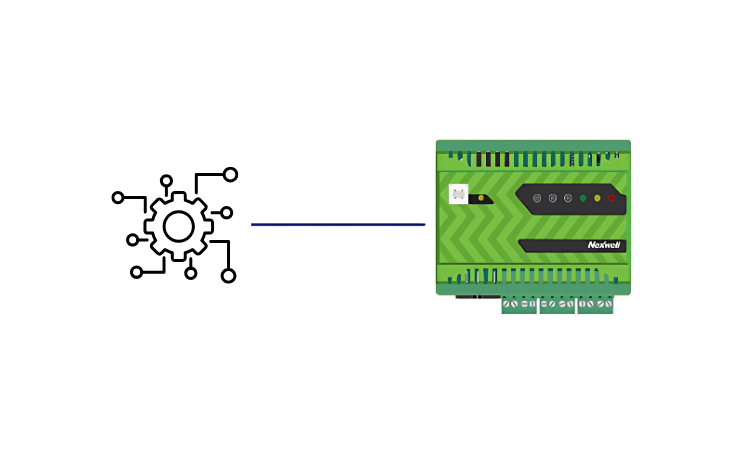
500 Logics
These are the core tools that determine the system’s behavior in situations defined by the Installer. Using a logical truth table, they link conditions to actions. A single truth table can include up to 4 conditions and 5 actions. It contains all possible logical combinations of condition occurrences, offering maximum flexibility in defining system behavior in specific situations. A wide list of both conditions and actions allows for precise implementation of the User’s requirements.
128 Compound states
Tools used to group multiple conditions into a single true/false status. Compound states are used in logics as input conditions.
128 Action sequences
Enable grouping several actions with defined time intervals to form a single operation. The execution of a sequence can be stopped, continued, or restarted. Their state is often used as an input condition for logics.
256 Virtual variables
Volatile memory cells in the system that hold values from 0 to 9999. These are modified by the system accordingly and determine the behavior of automation programs.
Mobile app and Multimedia card
The multimedia card and mobile app make managing a smart home even simpler and more intuitive. The central unit equipped with a multimedia card allows full control of the entire system via a mobile app available for Android, iOS, and tablets. This means you have complete control over your home from anywhere in the world—whether you’re at work, on vacation, or just relaxing on the couch.
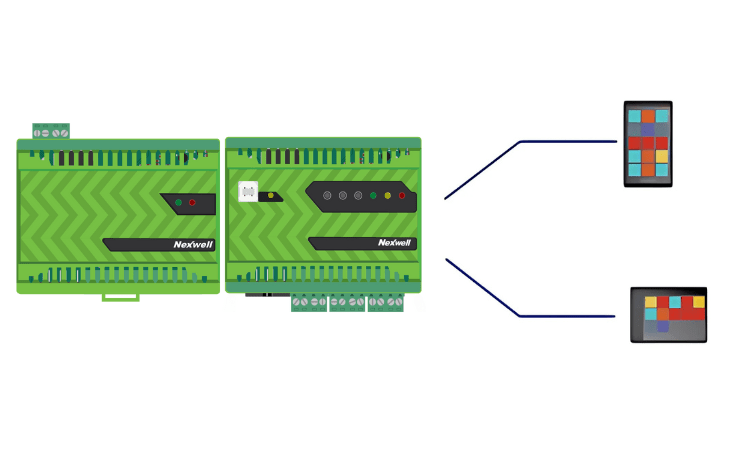

Alarm system and backup battery
The alarm system and backup battery ensure safety and uninterrupted operation of your smart home, even in the event of a power outage. The built-in alarm system includes 20 sensor outputs (high-current outputs), providing comprehensive protection for the entire property without the need for additional external systems. Thanks to integrated battery backup, the system remains active during power failures, offering peace of mind and protection in any situation.
Manipulators
The central unit manages the full automation of programmable switches, enabling convenient home control. Whether you want to turn off all the lights with a single button or close the blinds at a specific time, the central unit will take care of it for you. When leaving the house, one simple command can turn off the air conditioning, heating, or other devices—enhancing comfort and helping you save energy.
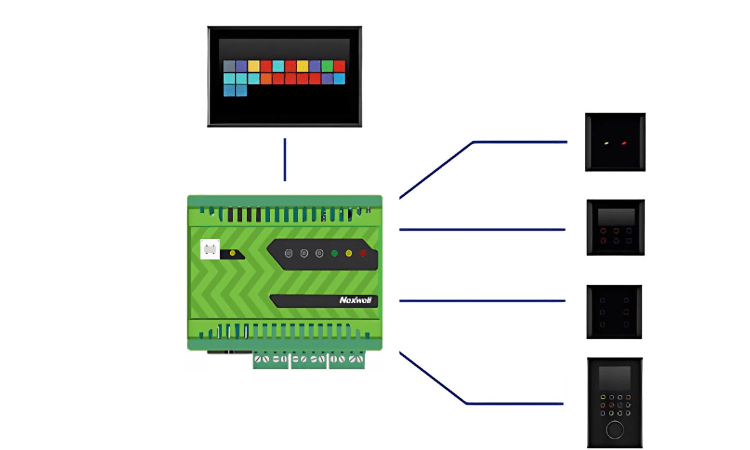
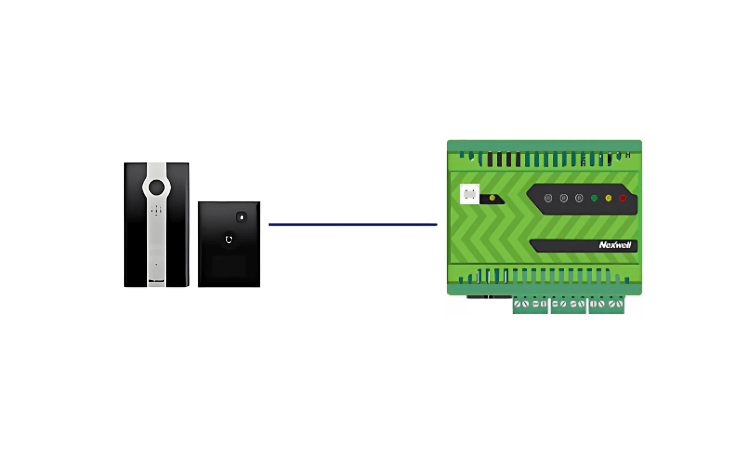
IP video intercom
The integration of the IP video intercom with the central unit allows for convenient call handling both through the mobile app and a 15.6″ touch panel. This lets users see and speak with visitors at the gate anytime, no matter where they are. Even when away from home—like at work—you can remotely open the garage gate or entrance gate to let in a delivery driver or guests.
System’s central
The system’s central unit is the heart of the entire home automation setup, enabling the connection and control of various multifunctional switches. It ensures that all elements of the smart home work together smoothly and automatically. Whether it’s lighting, blinds, or heating, the central unit manages everything in one place—offering convenience and saving you time.
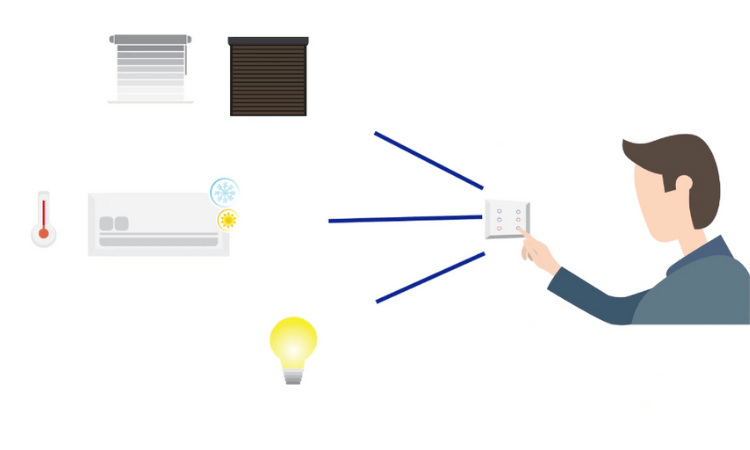
EASY INSTALLATION AND PROGRAMMING
Nexwell Academy
![]()

To quickly program standard functions, check out the Nexwell Academy. The Academy is available under the Knowledge Base → Academy tab. It is an interactive online module showcasing sample system logics created by Nexwell engineers. These logics, along with instructions, are available to all users of the Nexo systems.
Video Instructions
![]()
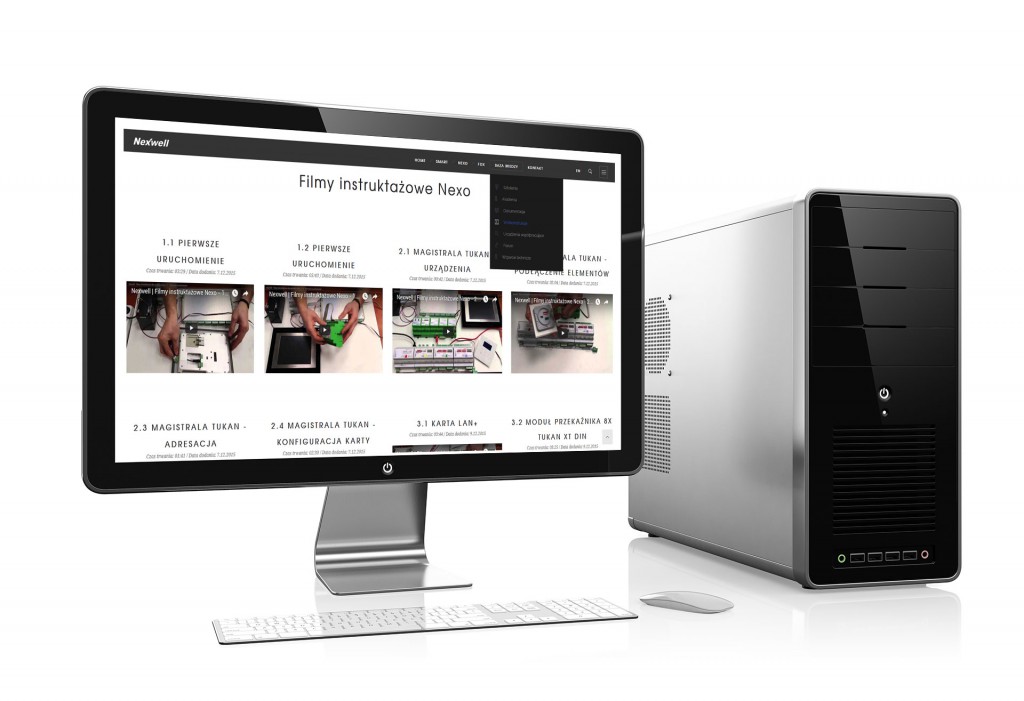
Visit the Knowledge Base → Video Instructions section. See how easy it is to add and activate the selected Tukan module and other devices in the Nexo system.


